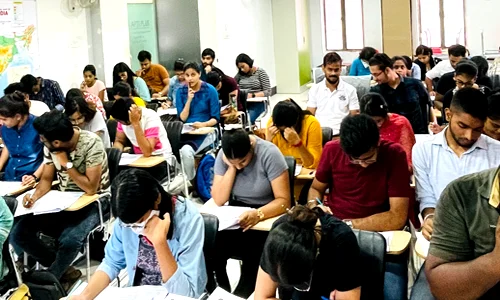



The Credit Guarantee Scheme for Exporters is a government initiative providing collateral-free credit support of up to twenty thousand crore rupees to Indian exporters, including micro, small, and medium enterprises. By offering a 100% government-backed credit guarantee, the scheme enhances liquidity, promotes market diversification, strengthens global competitiveness, and supports employment. It aims to facilitate export-led growth, enable smoother business operations, and contribute to India’s journey towards becoming a self-reliant economy.
Click to View MoreGS-3, Environment, Indoor air pollution, IAQ, air quality in India, health and environment, pollution mitigation, household pollution, PM2.5 and PM10, carbon monoxide, VOCs, government initiatives, sustainable living, urban health, environmental awareness, clean air solutions.
Click to View More
Scientists have discovered a special type of brain immune cell called microglia that can protect against Alzheimer’s disease by reducing inflammation and slowing the buildup of harmful proteins like amyloid plaques and tau. These cells work through molecules PU.1 and CD28, offering a potential new direction for treatment. Alzheimer’s, a progressive brain disorder causing memory and cognitive decline, is a growing public health challenge globally and in India. Governments are responding with awareness campaigns, healthcare policies, and research initiatives, but challenges like high costs, limited access, and early diagnosis remain. The discovery highlights the promise of combining scientific research, healthcare, and policy to combat Alzheimer’s disease.
Click to View MoreStubble burning in India has multidimensional consequences. Environmentally, it releases particulate matter and greenhouse gases, reduces soil fertility, and harms biodiversity. Health-wise, it causes respiratory and cardiovascular diseases, eye irritation, and skin problems. Economically, while it saves farmers time and labor in the short term, it degrades soil, reduces crop yields, raises healthcare costs, and affects transport and tourism. Socially, it can trigger public health crises, farmer migration, and conflicts over legal penalties. Effective policy measures—including satellite monitoring, incentives for eco-friendly machinery, and balancing farmer livelihoods with environmental protection—are crucial to mitigate these impacts.
Click to View MoreIndia aims to become a $30 trillion economy in the next 25 years, driven by sustained GDP growth, strategic government policies, and long-term planning. While past growth trends and currency factors make this projection plausible, challenges such as slowing growth rates, inflation, and infrastructure gaps remain. Achieving this goal will require multi-dimensional efforts in trade, investment, technology, and human capital development, positioning India as a major global economic power by 2050.
Click to View MoreClimate models are computer-based tools that simulate Earth’s climate systems to study past, present, and future climate patterns. Over time, they have evolved from simple energy balance models to advanced global and regional models. While these models help predict trends like temperature rise and monsoon changes, they face issues such as data gaps and limited regional accuracy. The Indian government is improving model precision through projects like the National Monsoon Mission and supercomputers such as Pratyush and Mihir.
Click to View MoreRare Earth Elements (REEs) are 17 vital metals used in modern technologies like electronics, renewable energy, and defense systems. Although India holds significant reserves, it depends heavily on imports—mainly from China, which dominates global production and processing. The ongoing trade tensions have highlighted India’s need for self-reliance in critical minerals. To address this, the government has launched initiatives such as the National Critical Minerals Mission, policy reforms under the MMDR Act, and incentives for refining, recycling, and magnet manufacturing. Strengthening domestic capacity, fostering international collaborations, and ensuring sustainable extraction are key to making India a global player in the rare earth sector.
Click to View More
© 2025 iasgyan. All right reserved